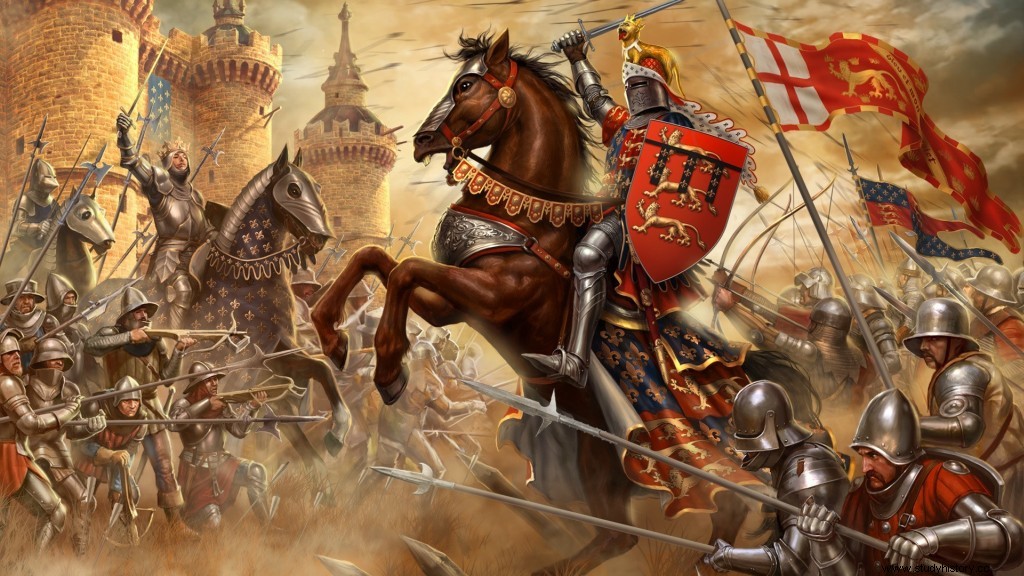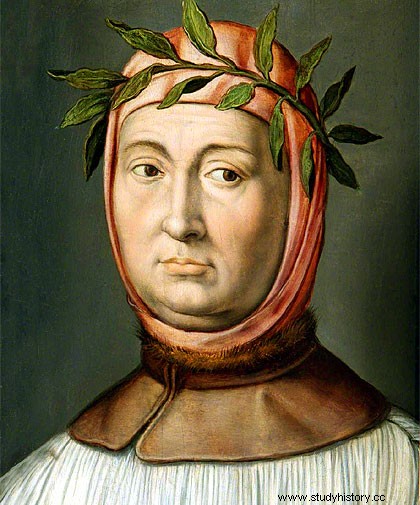With the decline of the medieval world, which occurred throughout the fifteenth century, a return to the values of classical Greco-Roman culture was sought in Europe, the Renaissance began . Although there was also a renewal in the world of science, the main stronghold and exponent of the Renaissance can be found in the field of the arts. Leaving behind the feudal system, a new social class would begin to emerge, the bourgeoisie, which would lay the foundations of capitalism and a mercantile economy, and would be the standard-bearer of a cultural and intellectual movement in the mid-eighteenth century, the Enlightenment . This movement would culminate in the French Revolution (Liberté, égalité, fraternité ) and the Industrial Revolution. From this new society, completely different from the one imposed by kings, nobles and clergy during the Middle Ages, it is easy to "sell" the Middle Ages as a dark age of ignorance and barbarism, an age that was only surpassed when the ideals championed by modernity triumphed. Enlightenment itself:reason, critical spirit, scientific progress, liberalism... The more barbaric and dark medieval society was painted, the better a society based on the ideals of the French Revolution and the Enlightenment would "sell".

And who created this myth?
The main person responsible was the Italian Francesco Petrarca . A man who had bad luck in life and even after death. As a good poet, his 70 years of life minus one day (he almost died on his birthday) were not very pleasant:he wrote 366 poems to a certain Laura, muse and platonic love who brought him down the street of bitterness, received he was kicked by a horse that damaged several ribs, suffered several religious crises, changed cities frequently, had constant disagreements with his son Giovanni and suffered from various illnesses. When he died in 1374, to rest in peace was just a euphemism, because his bones have undergone six transfers to be moved or analyzed. And, as is logical, every time they opened his tomb, handling his tibias and femurs did not help much to preserve them. During the 2003 exhumation it was discovered that his skull was not his but that of a woman and it was not even from his time but from a previous century, in addition he was missing his right arm which, according to legend, was stolen by a friar in 1630 .

Leaving aside the particular vicissitudes suffered by his remains, one might wonder why Petrarch undertook this ideological and propagandistic crusade against the Middle Ages and in favor of recovering classical culture, ultimately represented by the Roman Empire. Logically, it was influenced by the economic, cultural, moral and demographic collapse of the 14th century produced by the Hundred Years' War that devastated Europe; by the cold period, which we know today as the Little Ice Age, which ended the years of climatic prosperity and had a catastrophic influence on crops; by the Black Death and by the so-called Babylonian captivity of the Popes -by analogy with the captivity suffered by the Jews in Babylon in the sixth century BC-. In 1309, faced with the interference of power between Popes and kings or emperors and the different wars that devastated the Italian peninsula, Clement V took refuge under the protection of the French king and transferred the papal court from Rome to Avignon. For almost 70 years the Popes were captives of the kings of France but, yes, in golden cages:great palaces, surrounded by works of art, in good company... According to Petrarch himself, who for a time lived in Avignon...
Avignon is the shame of humanity, a pit of vices, a sewer where all the dirt in the world is found. There God is despised, only money is venerated, and the law of God and that of men is trampled on. Everything there breathes a lie:the air, the land, the houses and, above all, the papal bedrooms. They worship Venus and Bacchus more than Jesus Christ.
If to all this we add that, for Petrarch, after the decline of Rome, artistic and literary creation had fallen into its bottomless pit -he said that the Muses had to be recovered from their exile-, it seems logical to yearn for past times. But Petrarch went a step further:he did not stay licking the wounds caused by the time in which he lived and longing for past times, but he established the bases to return the values of classical culture, the Renaissance . In fact, he began to establish a temporal division of history based on a cultural and intellectual vision:a first epoch characterized by classical Greco-Roman culture, a second where barbarism and obscurantism are the predominant notes, and a future third epoch in which classical splendor will be recovered and that Petrarch, as he wrote in his epic poem entitled Africa , you want it to arrive soon…
My destiny is to live in the midst of varied and confusing storms. You, on the other hand, if – as my soul hopes and desires – you outlive me by many years, perhaps better times await you; this torpor of forgetfulness will not last forever. With the darkness dispelled, our grandchildren will be able to walk again in the pure brilliance of the past.
A model of history periodicity that can be simplified as lights, shadows –in medium , in the words of the poet, and that would correspond to the Middle Ages- and the recovery of the lights. Already in the fifteenth century, it will be the Italian humanist Flavio Biondo which will name the three ages (Ancient, Middle and Modern), delving into the idea that the Middle Ages (medium aevum ) was nothing more than a long night of 1,000 years between two glorious eras.
I am not going to deny that in this period there were dark and even black centuries, but we are talking about ten centuries. There was time for centuries of all colors. It should not be forgotten that the first Universities were also protagonists of these centuries, both private and linked to the Church, which created a community of scholars spread throughout the world; Gothic art and the great cathedrals that we proudly display in our cities today; the creation of guilds as groups of workers in defense of their rights; the rise of cities; the end of the slavery that sustained the Republic and the Empire and will resume its leading role in the Modern Age; compass navigation; the invention of gunpowder or the printing press itself; the hospitals that began to flourish throughout Europe and wherever the religious orders arrived, since they were linked to monasteries or to the orders themselves -such as the Jerusalem hospital of the Order of the Knights of Saint John-, and in which the monks or clergymen cared for the sick, pilgrims, the poor or abandoned children... and thus could continue throwing arguments at the saucer of lights until in the scales of justice it was equal to the saucer of shadows.
Such a long period gave for everything, and we would be wrong to let the shadows obscure the lights.
